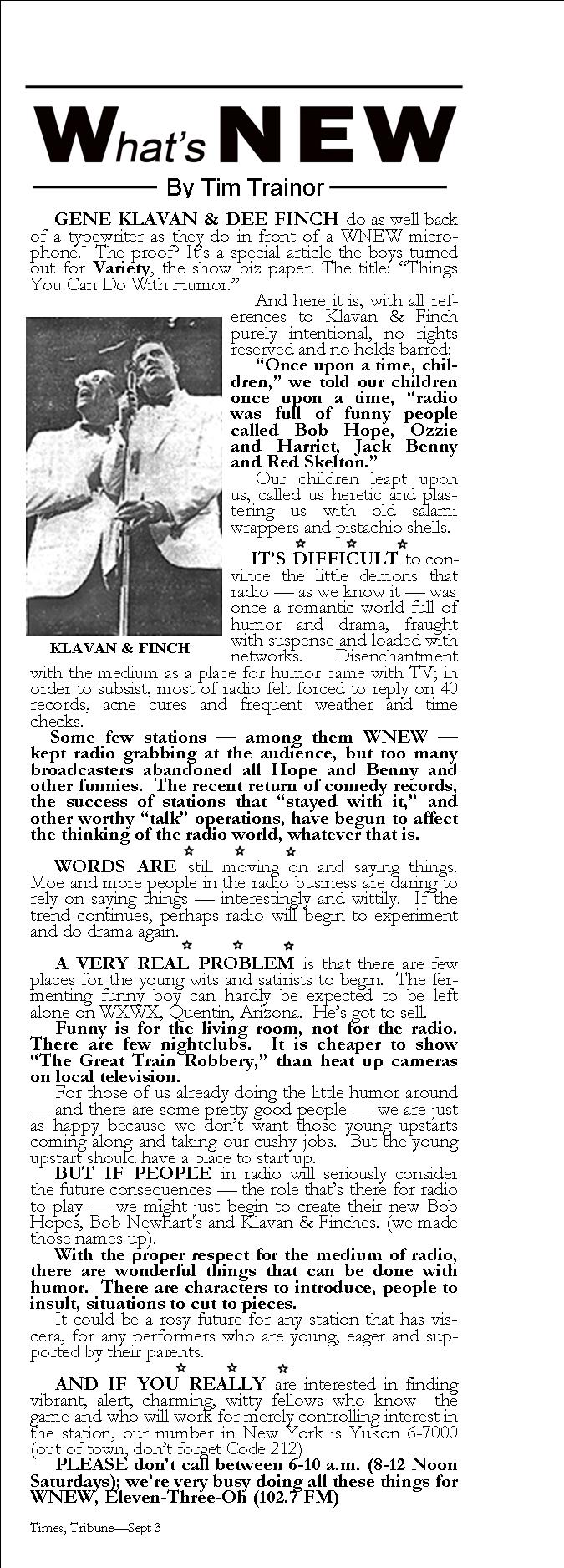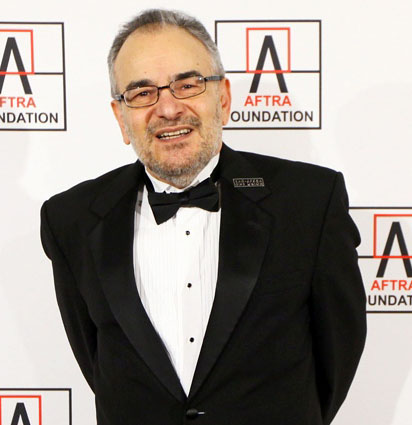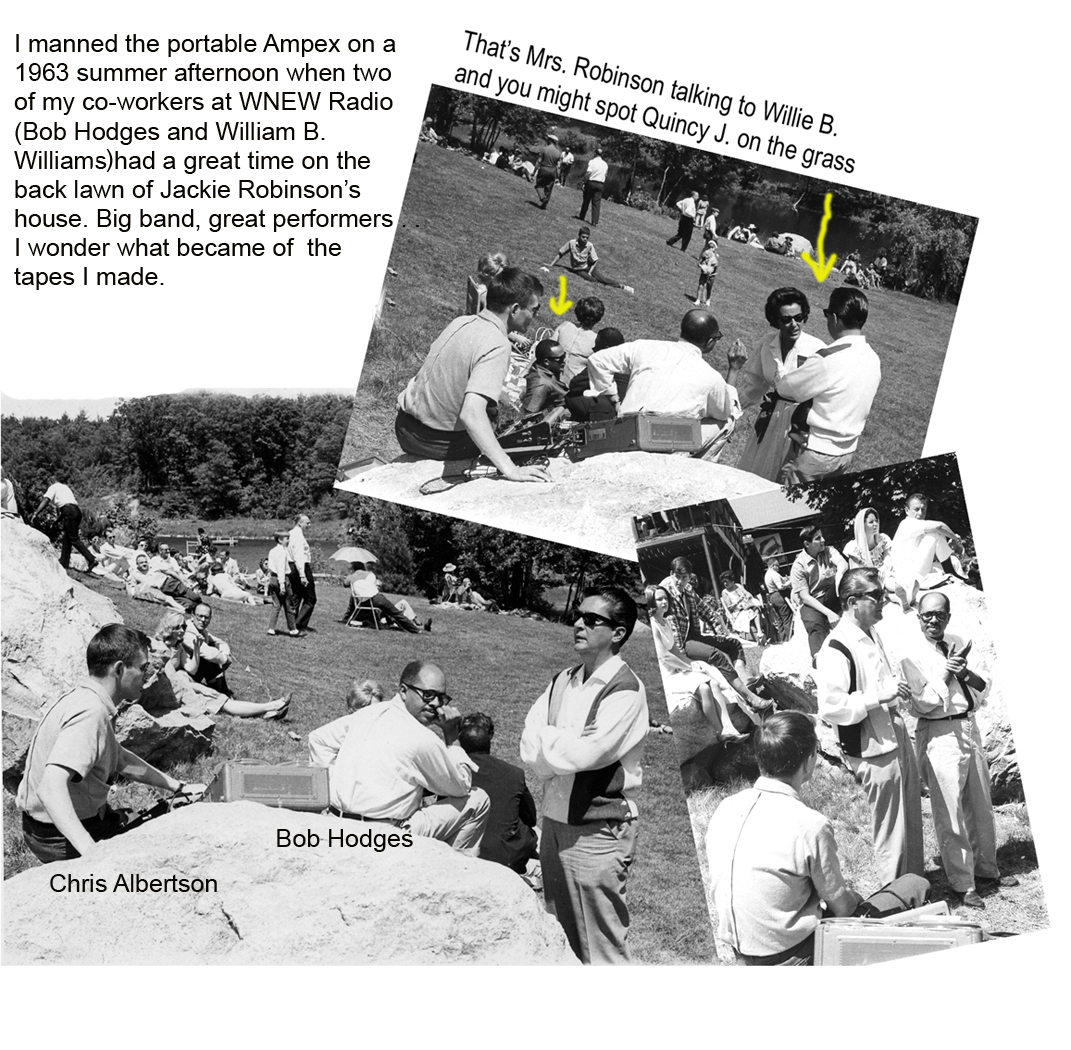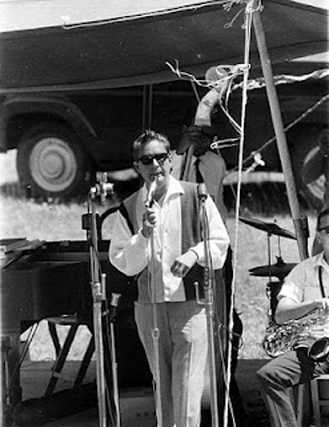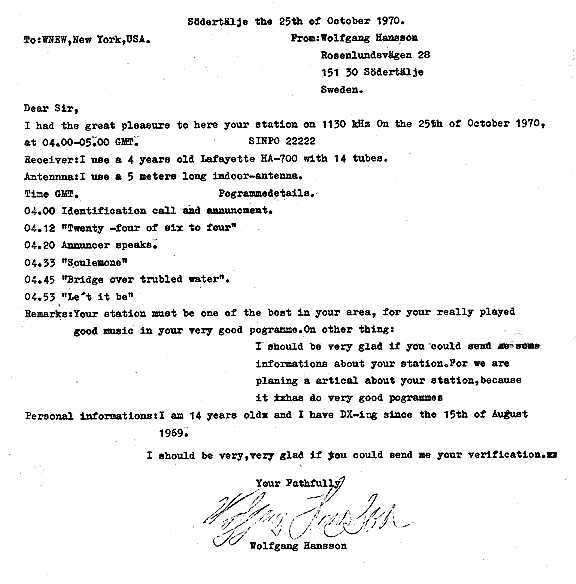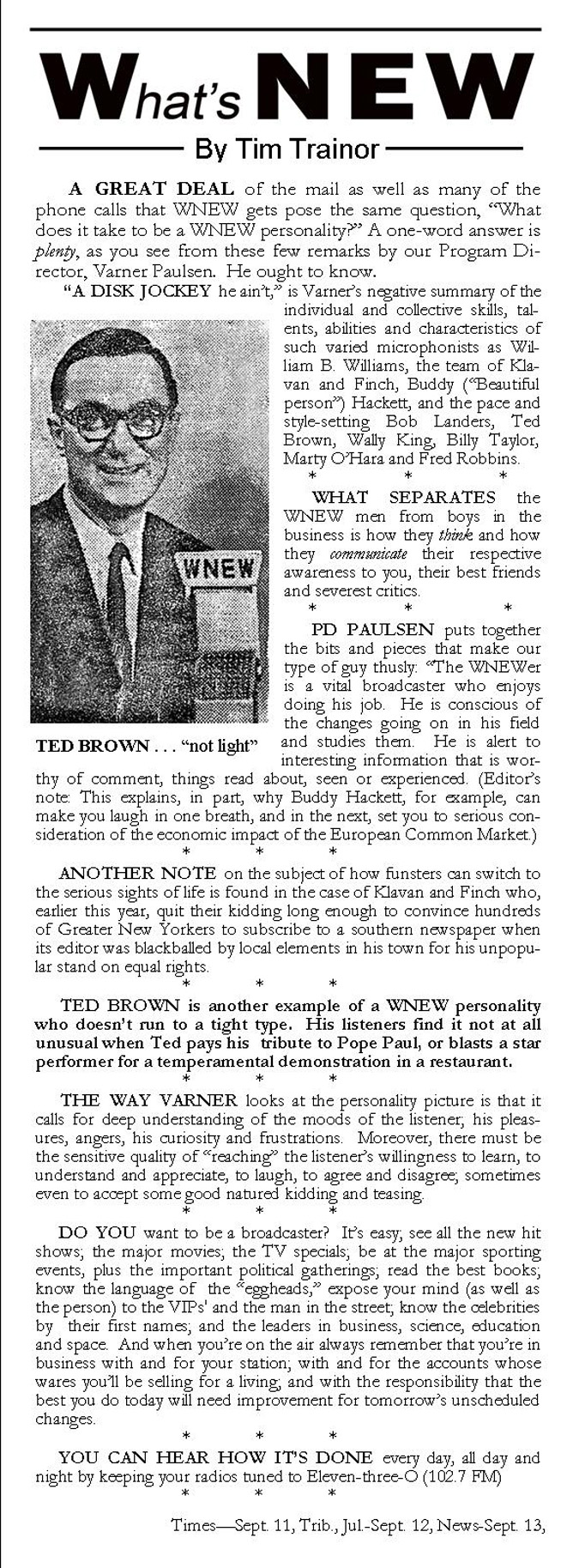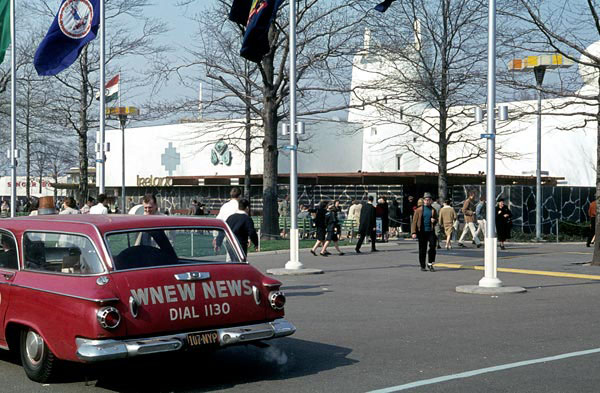WNEW 30th Anniversary promotions in 1963, included a series of column-like promos, What’sNEW, placed in New York’s major dailies. The item below, which appeared in the Times and Tribune in September, 1963, is the 4th edition we’ve reconstructed from original clips collected by Bill Diehl.
Pete Fornatale
Update — Saturday, April. 28, 2012 — Bill Diehl (WNEW/ABC) spoke with Pete Fornatale a couple of years ago on ABC radio, after Fornatale released his ode to the Woodstock era entitled “Back to the Garden: The Story of Woodstock.” http://www.youtube.com/watch?v=1FQSS1UNuJg
New York Times feature story by Douglas Martin, published: April 27, 2012, appears below the following item.
Pete Fornatale, pioneering NYC rock radio deejay and writer, dead at 66
Bronx native was one of first free-form deejays on early FM rock radio
By David Hinkley – NEW YORK DAILY NEWS
Thursday, April 26, 2012, 4:07 PM
Pete Fornatelle, a New York deejay, historian and writer who for almost 50 years championed the spirit of musical freedom on the radio airwaves, died 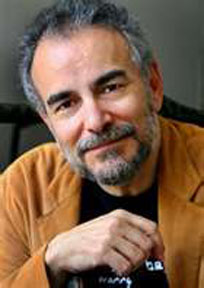 Thursday at Beth Israel Medical Center. He was 66.
Thursday at Beth Israel Medical Center. He was 66.
He suffered a brain hemorrhage on April 15 and been in intensive care for the last week.
A native of the Bronx and a graduate of Fordham, Fornatale started his deejay career Nov. 21, 1964, hosting “Campus Caravan” on Fordham’s WFUV.
He continued “Campus Caravan” until 1970, by which time he was also working at WNEW-FM as one of the pioneer free-form deejays on early FM rock radio.
“For the first time, we could play music on the radio the way we played it in our lives,” he said last year. “It wasn’t just the top 40 played over and over. You could play longer tracks, you could play older tracks, you could make the music fit together.
“It was magical.”
“My fondest memory of Pete,” said his long-time radio colleague Pat St. John, “was listening to him one Sunday morning when he was doing a show on different songs about life.
“A particular favorite of mine is a very little-known song by Rick Nelson simply called ‘Life.’ After about an hour, I called Pete and suggested this tune, and he told me he’d just cued it up and it’d be the next song he was going to play.
“It goes, ‘Life, what are we here for? / I want to know more.’”
Fornatale worked at WNEW-FM until 1989, when he moved to WXRK. He briefly moved back to WNEW-FM a few years later.
But as commercial radio moved further away from the free-form spirit, he and other free-form advocates became increasingly disenchanted.
In 2001, he returned to non-commercial WFUV, where he hosted a free-form show he had started in 1982 called “Mixed Bag.” He also hosted a weekly in-depth interview show, and he frequently tied both shows to historic or contemporary themes.
His last “Mixed Bag” show on April 14, commemorated the 100th anniversary of the sinking of the Titanic.
“This is just the right amount of radio to be doing,” he said last year. “I have this show every week where I can say what I want, but I don’t have to be scrambling to fill four hours every day. That gets harder as you get older.”
He developed close relationships with artists like Paul Simon over the years and was also active in several charity organizations.
That included World Hunger Year, which was co-founded by his friend Harry Chapin in 1975 and is now run by cofounder Bill Ayres as WhyHunger.
Fornatale raised money and hosted WHY events for many years.
He also wrote a number of books on music, including a history of Woodstock and a biography of Simon and Garfunkel. He often hosted shows on WNET and was a consultant on music projects for MTV and VH1.
He said last year he was always fascinated by “the real stories of what happened with music and songs. So much gets mythologized, but to me the real story is almost always better.”
Pete Fornatale attends the AFTRA Foundation’s 2012 AFTRA Media and Entertainment Excellence Awards in February. Neilson Barnard/Getty Images
He won the Armstrong Excellence in Broadcasting Award in 1983 and received AFTRA’s Media and Entertainment Excellence Award in February at the Plaza.
Fornatale was born and raised in the Belmont section of the Bronx, known as Little Italy.
He was just a few years behind Dion and the Belmonts, who were one of his favorite artists, and he recalled growing up to the sound of vocal harmony groups, as well as Elvis and early rockers.
The first record he bought, he said, was Elvis’s “Hound Dog.”
He graduated from Fordham Prep before he attended Fordham, and after he graduated he spent two years as a teacher before going into radio full-time.
“Pete was always teaching us,” said folksinger and friend Christine Lavin, “even when we thought we were just being entertained.”
Fornatale is survived by his ex-wife Susan and their three sons, Peter, Mark and Steven.
Click on link for New York Daily News http://www.nydailynews.com/topics/Pete%20Fornatale
Pete Fornatale thumbnail photo and WNEW-FM promotion publication added by WNEW1130.com
NEW YORK TIMES FEATURE STORY By DOUGLAS MARTIN
Published: April 27, 2012
Civil Rights Jazz
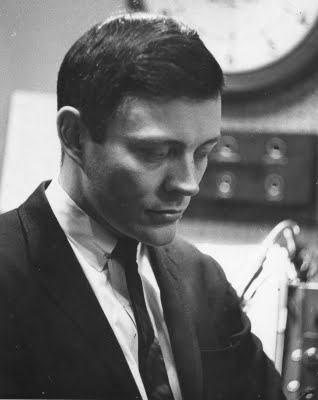 As a jazz DJ/journalist, Chris Albertson arrived in New York in 1960 from Philadelphia radio stations WCAU and WHAT-FM. While employed as WNEW’s Continuity Director, he was also producing jazz recordings and working nights as a volunteer at leftist, avante garde WBAI-FM. He left WNEW in 1964 to work at WBAI full time, eventually becoming General Manager.
As a jazz DJ/journalist, Chris Albertson arrived in New York in 1960 from Philadelphia radio stations WCAU and WHAT-FM. While employed as WNEW’s Continuity Director, he was also producing jazz recordings and working nights as a volunteer at leftist, avante garde WBAI-FM. He left WNEW in 1964 to work at WBAI full time, eventually becoming General Manager.
From his WNEW files, he sent us captioned website photos from a 1963 special event MC’d by William B. Williams at the North Stamford, Conn. home of Jackie Robinson. Albertson was there to record the event.
On his website, Albertson wrote, “I made a stop at one of my favorite blogs, Villes Ville and learned the sad news that Joya Sherrill left us on June 28, 2010. You may recall that Joya sang with Duke Ellington’s Orchestra off and on between 1942 and 1959. I took this photo of her in 1963, at a summer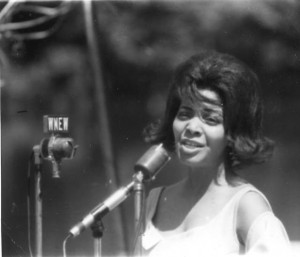 afternoon lawn party thrown by Jackie Robinson and his wife as a benefit to raise bail money for SNCC. (Student Non-Violent Coordinating Committee).
afternoon lawn party thrown by Jackie Robinson and his wife as a benefit to raise bail money for SNCC. (Student Non-Violent Coordinating Committee).
Many performers were there, including Quincy Jones and Billy Taylor, The Dave Brubeck Quartet, and the Ellington Alumni Orchestra, led by Mercer Ellington. . . I was there with William B. Williams and a WNEW crew. “
“Here are more photos from that afternoon. Willie B was the MC and you’ll spot our host behind him.”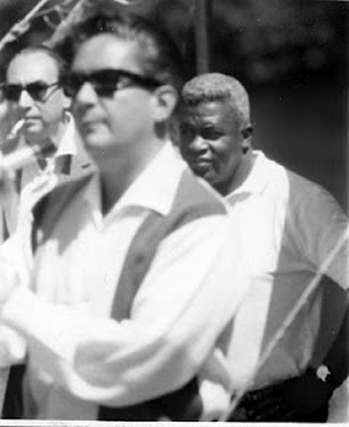
More later from Chris Albertson’s Klavan and Finch file. His web biography: http://en.wikipedia.org/wiki/Chris_Albertson
“Södertälje Calling”
After reading Wolfgang Hanson’s letter (below) Andy Fisher sent this e-mail comment. “I believe one of the engineers once told me we got a DX card from Iran. We were regularly received in Britain, and two BBC officials stopped by the station one night to say that they listened to WNEW’s 1AM newscast at Broadcast House in London every morning at 6. Lots of people in Nova Scotia listened to us on a regular basis, and in distant parts of New England, we came in at night like a local station!”
Södertälje, Sweden is about 19 miles from Stocholm. Bjorn Borg was born there. The Big “W” had a pen pal there. Thanks to Bill Diehl for this special delivery. Clicking on 14-year old Wolfgang Hanson’s letter should enlarge the image.
What’sNEW #3
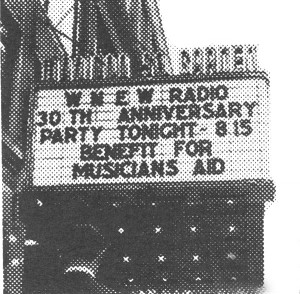 VARIETY’S banner headline of July 24, 1963, WNEW TOASTS 30TH WITH GALA! spanned five columns of stories about the big “W’ including the big show at Madison Square Garden as the start of six months of promotion leading up to WNEW’s 30th anniversary, February 13, 1964. In its issue of August 3rd, a Billboard front page story reported that 15,000 people attended the event. On the bill were Steve Lawrence, Eydie Gorme, Vic Damone, Della Reese, The Si Zentner and Tommy Dorsey Bands, Jerry Vale, Frank Sinatra Jr., Peter Nero, Dave Brubeck Quartet, Jack Jones, Gene Klavan, Dee Finch, William B. Williams, Bob Landers, Ted Brown, Wally King, Fred Robbins, Billy Taylor, Marty O-Hara.
VARIETY’S banner headline of July 24, 1963, WNEW TOASTS 30TH WITH GALA! spanned five columns of stories about the big “W’ including the big show at Madison Square Garden as the start of six months of promotion leading up to WNEW’s 30th anniversary, February 13, 1964. In its issue of August 3rd, a Billboard front page story reported that 15,000 people attended the event. On the bill were Steve Lawrence, Eydie Gorme, Vic Damone, Della Reese, The Si Zentner and Tommy Dorsey Bands, Jerry Vale, Frank Sinatra Jr., Peter Nero, Dave Brubeck Quartet, Jack Jones, Gene Klavan, Dee Finch, William B. Williams, Bob Landers, Ted Brown, Wally King, Fred Robbins, Billy Taylor, Marty O-Hara.
Station promotions in the months that followed, included column-like promos What’sNEW, placed in New York’s major dailies. Below is the 3rd edition we’ve reconstructed from original clips collected by Bill Diehl.
WIP, at 90, Lives On
WIP Philadelphia has a celebrated history of its own, but to many former WNEW staffers, WIP, during years it was owned by Metromedia, was the other side of a revolving door, through which people came and went to promotions or exile. Two of the many people who worked both sides of that door, Andy Fisher and Dick Carr, attended WIP’s 90th birthday party yesterday (March 21) and took notes. Andy’s note, posted on the NY Radio Message Board, is also reproduced below
http://www.musicradio77.com/wwwboard/messages/394271.htm
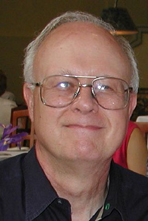 Andy Fisher — A radio station that has at times served as a farm team for New York talent celebrated its 90th birthday today, at a luncheon sponsored by the Broadcast Pioneers of Philadelphia at the Bala Country Club in Philly. Speakers at the WIP anniversary event included programmers Dick Carr and Dean Tyler and air personality Bill St. James. Jerry Del Colliano, founder and former publisher of the industry newsletter Inside Radio, and a former news anchor and programmer at Philadelphia stations, was master of ceremonies.
Andy Fisher — A radio station that has at times served as a farm team for New York talent celebrated its 90th birthday today, at a luncheon sponsored by the Broadcast Pioneers of Philadelphia at the Bala Country Club in Philly. Speakers at the WIP anniversary event included programmers Dick Carr and Dean Tyler and air personality Bill St. James. Jerry Del Colliano, founder and former publisher of the industry newsletter Inside Radio, and a former news anchor and programmer at Philadelphia stations, was master of ceremonies.
Speakers recalled WIP’s founding by — and at — the Gimbel department store in center city Philadelphia, the purchase of the station by Metromedia in the late 1950s and its heyday as a standards station, its acquisition of the rights to Eagles football play-by-play, and its current success in sports talk radio.
After a lifetime at 610 on the AM dial, WIP recently began duplicating its broadcasts on FM and billing itself as 94 WIP.
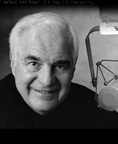 Dick Carr posted his WIP notes on his Big Bands, Ballads and Blues blog: www.bigbandsballadsandblues.com
Dick Carr posted his WIP notes on his Big Bands, Ballads and Blues blog: www.bigbandsballadsandblues.com
Jim Donnelly (WNEW 1968-1972)
Read Andy Fisher’s comments (below the David Hinkley story) about working shifts with Jim Donnelly, especially two nights when the number 13 figured in the news. Andy is also quoted by Hinkley. And, thanks to Bob Gibson for reminding us that March 28th is the anniversary of Jim’s birth.
Jim Donnelly Set Standard For All-News Radio
BY DAVID HINCKLEY DAILY NEWS STAFF WRITER
Jim Donnelly, one of the defining voices of all-news radio in New York, died Saturday night at the age of 69. Donnelly, who retired in 1992 from WCBS-AM after a 20-year career as co-anchor of the morning newscast there, had suffered from Parkinson’s disease. “Jim’s been gone from ‘CBS for 10 years and people in our newsroom today still consider him a legend,” WCBS-AM news director Steve Swenson said yesterday. “Almost anyone who was here during his years talks about him as a role model.”
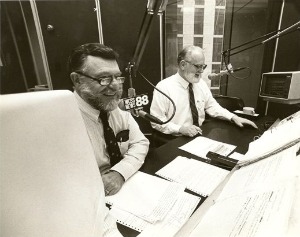
Friends remembered him yesterday as an old-school newsman who wrote his own copy and pushed relentlessly for precision and maximum objectivity in news reporting.
“Jim was the consummate professional,” Andy Fisher wrote on the New York Radio Message Board. Fisher was Donnelly’s colleague in the news department at WNEW-AM from 1969 until Donnelly left for WCBS-AM in 1972. Fisher also recalled a man who was “a patriot at a time when patriotism was not fashionable” and said it was “very difficult for him to accept the changes that came over radio toward the end of his career,” when much of the medium moved toward a more informal news style.
Donnelly helped pioneer the two-anchor team in morning drive and was partners over the years with Lou Adler – who hired him from away from WNEW – Robert Vaughn and Brigitte Quinn. Harvey Nagler, former news director at WCBS-AM, suggested after Donnelly retired that the most telling mark of his professionalism was that he never became the story. For 20 years, he kept the focus on the news.
That’s something that’s not true for all news personalities today
Photo added by WNEW1130
A Note from Andy Fisher — At WNEW, before he got the morning gig, Jim worked an evening shift that started at 5 — but his first cast was not until 8. By 8, he would have all five of his hourlies written, and would just tweak them in the unlikely event that news broke.
Jim’s conservative political bent — way out in front of the neocons, evangelicals, etc. — was legendary. He kept an 8×10 headshot of his brother, a Philadelphia police captain, in the top drawer of his desk, and would prop it up against his telephone as he worked his shift.
On the night that the Apollo 13 astronauts came home, we devoted the 11PM news to a montage of all the day’s events, starting with the separation of the command and service modules, through the re-entry and the nation’s (especially New York’s) reaction to it, and ending with the prayer of the chaplain on the recovery ship Iwo Jima. Jim wrote all the newscasts and let me devote the evening to preparing the montage. It included an exchange that did not make it into the Apollo 13 movie, and went something like this:
Mission commander Jim Lovell, getting his first look at the damaged command module from the separated re-entry vehicle: “One whole side of that spacecraft is missin’! All the way back from the high-gain antenna!”
Mission control: “Well, James, if you can’t take any better care of a spacecraft than that, we might not give you another one!”
After the Giants’ first Monday-night football game, a messy game with Dallas in which there were ten turnovers, Jim encouraged me to create a montage of Marty Glickman’s play-by-plays of all those miscues. It was hilarious.
Conservative as he was, Jim encouraged my adventures in radio production, especially in sports, which came in very handy as WNEW became more and more of a sports station over the next several years.
Andy
Editors’ Note– Apollo 13 landed on April 17, 1970. The Giants lost to Dallas, 20-13 on October 11, 1971. And here’s the fumble festival:
http://wnew1130.com/wp-content/uploads/2012/03/Fumbles.mp3A “Milkman” Returns
MARTY WILSON
(WNEW 1981-1986)
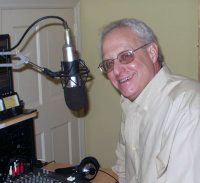 Marty became interested in broadcasting at a very young age. His parents surprised with him with tickets to be in the Peanut Gallery on the “Howdy Doody Show.” He spent more time looking at the cameras, mike booms, and production staff than he did at Buffalo Bob and the puppets!
Marty became interested in broadcasting at a very young age. His parents surprised with him with tickets to be in the Peanut Gallery on the “Howdy Doody Show.” He spent more time looking at the cameras, mike booms, and production staff than he did at Buffalo Bob and the puppets!
A few years later he took the tour of NBC Radio and was hooked. In junior high school he became a member of the Cousin Brucie Fan Club and would visit the WABC studios on West 66th Street. He then worked for Bruce backstage at Palisades Amusement Park.
After enrolling at City College he majored in cutting class to work at the college radio station where he became Assistant Station Manager and hosted a number of shifts.
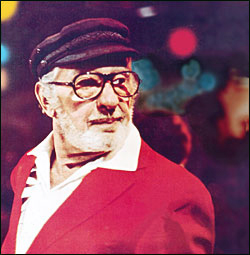
In 1968 he got a job at WEVD as a summer and part time engineer. In addition to learning how to understand commercials in 16 languages, he met Symphony Sid. One night at a remote from the St. George Hotel in Brooklyn, Sid became a little “under the weather.” He turned to Marty and said, “You finish the show, I’m going home.” Marty then moved to the other side of the glass. He became a staff announcer, and when Sid retired, Sid gave him his record collection and later Marty hosted his own show, “Jazz Through The Night,” at times broadcasting from his Upper East Side apartment in a studio he built.
After leaving WEVD, he worked briefly at WHLI with the “Music Of Your Life” format.
During the “Jazz Through The Night” years he met Bob Jones, who was on the air at WNEW. Bob convinced PD Jim Lowe to give him an audition. The audition consisted of, “Here’s a reel of tape, there’s the studio, there’s the record library, do an hour.”
He was hired as the weekend host of the ”Milkman’s Matinee” and shortly thereafter became the full time Milkman following in the footsteps of a number of great hosts. He introduced a number of features during that time including an audience participation novelty called “It Could Be Verse” where listeners would try to guess what song was playing just by listening to the verse. Ted Brown enjoyed his style and insisted that Marty be his vacation substitute.
In 1987 Marty also conceived the idea for a syndicated program, “A Moment Of Musical History”, a daily feature, that was heard nationally and is still on the air as of this writing in 2012!
After leaving WNEW, he and a college buddy of his bought a station in New Haven, Connecticut, which he ran for nine years. After selling the station he joined the staff of “Jukebox Radio,” doing afternoons and then middays.
Now he concentrates on doing voice-overs and producing commercials for a variety of clients and agencies from his own studio in sunny South Florida.
Editor’s Note: Symphony Sid: http://en.wikipedia.org/wiki/Symphony_Sid
Kid In The Kitchen
“How I Got This Way” by Regis Philbin
Chapter I Bing Crosby
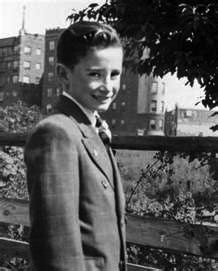 It all began with Bing Crosby during the Depression of the thirties. I must have been six or seven years old at the time. My family lived on the bottom floor of a two-story house on Cruger Avenue in the Bronx, and every night at 9:30, I sat by my little radio in our kitchen and listened to a half hour of Bing’s records regularly spilling out over WNEW. His voice was so clear, so pure and so warm that after awhile I thought of him as my good friend. Even though he was out in faraway, glamorous Hollywood and I was in the humble old Bronx, in my mind we truly were friends and would always spend that special half hour together, just the two of us.
It all began with Bing Crosby during the Depression of the thirties. I must have been six or seven years old at the time. My family lived on the bottom floor of a two-story house on Cruger Avenue in the Bronx, and every night at 9:30, I sat by my little radio in our kitchen and listened to a half hour of Bing’s records regularly spilling out over WNEW. His voice was so clear, so pure and so warm that after awhile I thought of him as my good friend. Even though he was out in faraway, glamorous Hollywood and I was in the humble old Bronx, in my mind we truly were friends and would always spend that special half hour together, just the two of us.
I listened to those songs of the Depression era and, even as a kid, I understood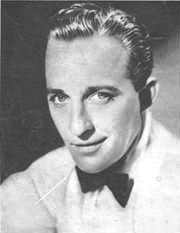 that the songwriters were trying to give hope to a struggling and downtrodden public. I grew to love those lyrics and what they said to me. I swear to you that those same songs have stayed with me for the rest of my life, and during various dark periods when I hit those inevitable bumps along the way, I would actually sing them to myself. Like “When skies are cloudy and gray, they’re only gray for a day. So wrap your troubles in dreams, and dream your troubles away.”
that the songwriters were trying to give hope to a struggling and downtrodden public. I grew to love those lyrics and what they said to me. I swear to you that those same songs have stayed with me for the rest of my life, and during various dark periods when I hit those inevitable bumps along the way, I would actually sing them to myself. Like “When skies are cloudy and gray, they’re only gray for a day. So wrap your troubles in dreams, and dream your troubles away.”
Definately Not An Undercover Assignment
In What’sNEW#1, posted February 2nd, mention was made of one of WNEW’s red mobile units, taking News Director Lee Hanna, Tech. Supervisor Shel Hoffman and engineer Howie Epstein to Washington D.C., Aug. 26, 1963 to cover the March On Washington. A photo of one of those Chrysler red hots, was discovered just a few days ago by chance on the internet. The photo, taken by Bill Cotter in April, 1965, shows the wagon in front of the Irish Pavillion, during the 1964/65 New York World’s Fair. Cotter posted the photo, and others, in 2010 on “World’s Fair Community.org.
http://www.worldsfaircommunity.org/topic/10385-wnew-news-at-the-fair/
When trade-in time came, WNEW stayed with the Chrysler New Yorker, but in quieter white.

